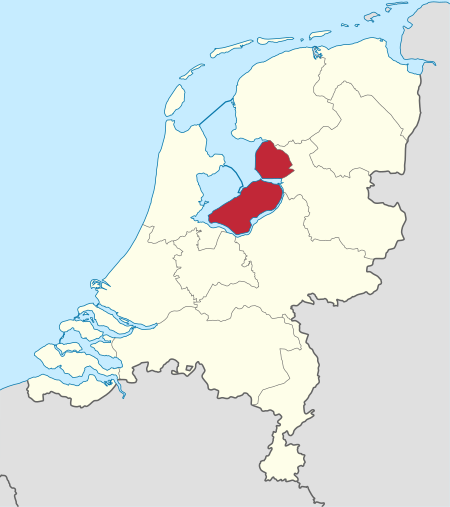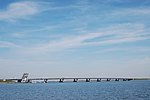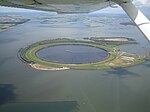Flevoland

Flevoland (Dutch: [ˈfleːvoːlɑnt] ) is the twelfth and newest province of the Netherlands, established in 1986, when the southern and eastern Flevopolders, together with the Noordoostpolder, were merged into one provincial entity. It is in the centre of the country in the former Zuiderzee, which was turned into the freshwater IJsselmeer by the closure of the Afsluitdijk in 1932. Almost all of the land belonging to Flevoland was reclaimed in the 1950s and 1960s while splitting the Markermeer and Bordering lakes from the IJsselmeer. As to dry land, it is the smallest province of the Netherlands at 1,412 km2 (545 sq mi), but not gross land as that includes much of the waters of the fresh water lakes (meres) mentioned.The province has a population of 423,021 as of January 2020 and consists of six municipalities. Its capital is Lelystad and its most populous city is Almere, which forms part of the Randstad and has grown to become the seventh largest city of the country. Flevoland is bordered in the extreme north by Friesland, in the northeast by Overijssel, and in the northwest by the lakes Markermeer and IJsselmeer. In the southeast, the province borders on Gelderland; in the southwest on Utrecht and North Holland. Outside urban areas, the land in Flevoland is predominantly used for agriculture.
Excerpt from the Wikipedia article Flevoland (License: CC BY-SA 3.0, Authors, Images).Flevoland
Wisentweg,
Geographical coordinates (GPS) Address Nearby Places Show on map
Geographical coordinates (GPS)
| Latitude | Longitude |
|---|---|
| N 52.533333333333 ° | E 5.6666666666667 ° |
Address
Wisentweg 15
8251 PB (Dronten)
Flevoland, Netherlands
Open on Google Maps








